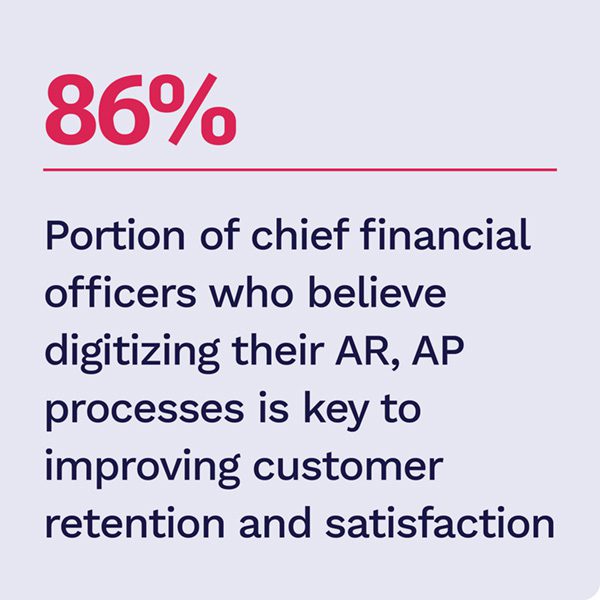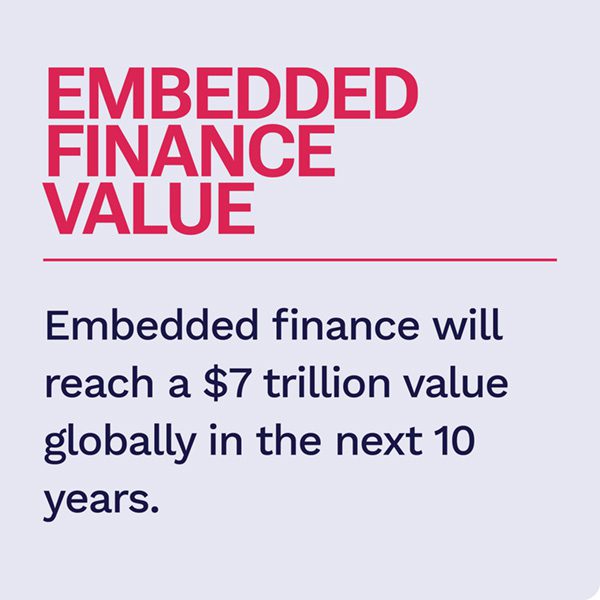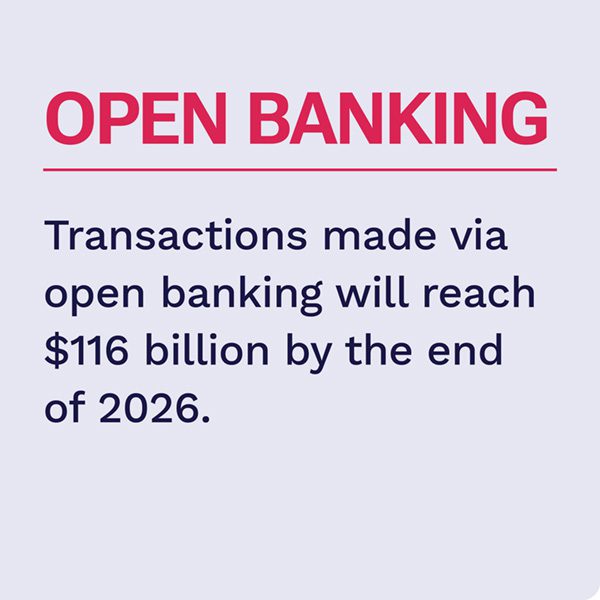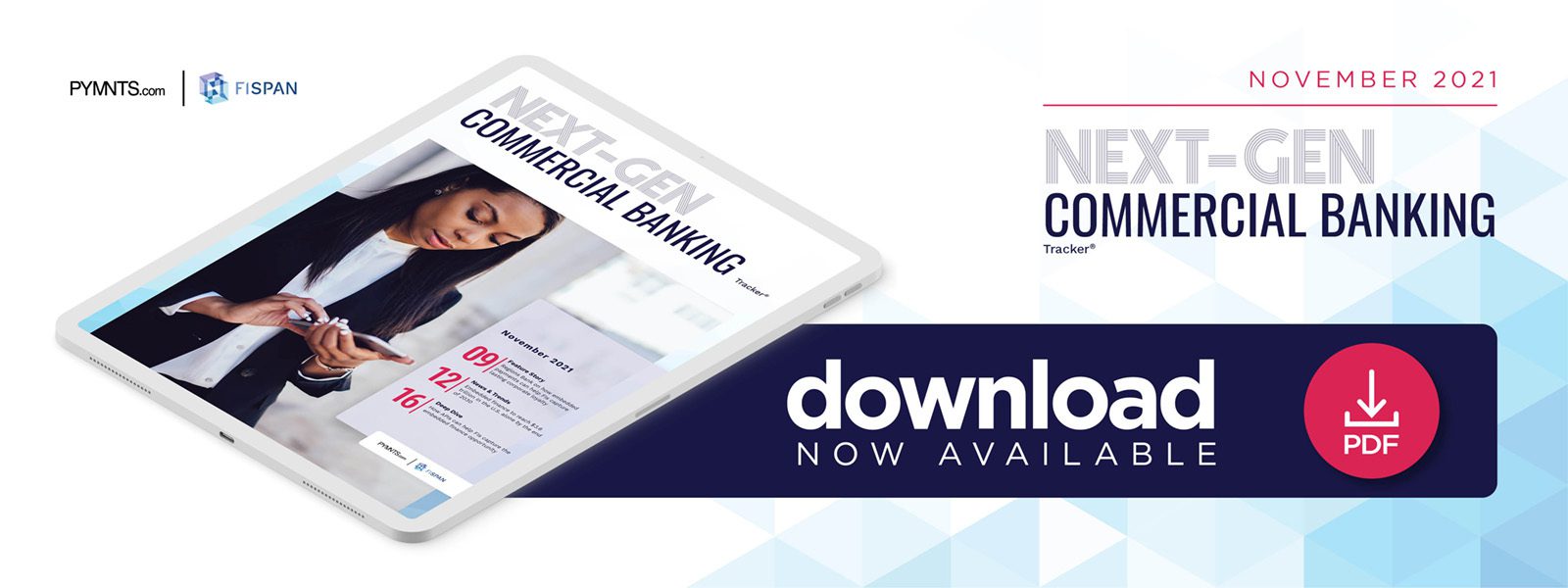Commercial Banking Customers Want Digital Products, Personalized Services That Resemble Consumer Accounts

Companies are pulling away from the manual processes they have used for decades in favor of less costly, speedier business-to-business (B2B) and consumer-facing tools to manage their payments and finances. Recent PYMNTS research found that 86% of chief financial officers believe digitizing their accounts  payable (AP) and accounts receivable (AR) processes is key for improving revenue and customer satisfaction.
payable (AP) and accounts receivable (AR) processes is key for improving revenue and customer satisfaction.
This digitization creates more interest in concepts such as embedded finance, which utilizes connective technologies to help integrate payments directly into businesses’ platforms or mobile sites. It also allows companies’ customers to make payments more conveniently, improving engagement and making the businesses’ cash flow more transparent. These changes make supporting such tools essential for financial institutions (FIs) that want to generate and retain the loyalty of their corporate clients.
In the latest Next-Gen Commercial Banking Tracker®, PYMNTS analyzes how businesses’ payment and financial needs are shifting and what role embedded finance may play in the future of corporate banking.
Around the Corporate Banking World
A growing number of businesses are analyzing how they can improve the speed and efficiency of their current payments or other financial processes after the impacts of the global health crisis. The rising interest in more convenient, digital-first transactions indicates the number of payments made via open banking will expand in the next few years, according to one recent study.
The report found open banking-supported payments will surpass $116 billion by the end of 2026, compared to the $4 billion they will reach by the end of this year. The report also noted that open banking will be essential for the continued growth of embedded finance and banking-as-a-service (BaaS) tools, which use application programming interfaces (APIs) to send swiftly send money and data. Businesses must therefore look to partner with API vendors and supportive FIs to keep pace.
Com panies are also adopting real-time payments in higher figures, with such payments set to play a more critical role in the B2B and commercial banking space in the next few years. Industry experts predict real-time payments will account for between 30% and 50% of all B2B payments worldwide by 2025, for example. Approximately one-third of B2B companies have already integrated real-time payments into their platforms, indicating that industry interest is growing. Banks must take steps to ensure they stay abreast of how businesses are utilizing real-time or embedded finance solutions to keep their loyalty.
panies are also adopting real-time payments in higher figures, with such payments set to play a more critical role in the B2B and commercial banking space in the next few years. Industry experts predict real-time payments will account for between 30% and 50% of all B2B payments worldwide by 2025, for example. Approximately one-third of B2B companies have already integrated real-time payments into their platforms, indicating that industry interest is growing. Banks must take steps to ensure they stay abreast of how businesses are utilizing real-time or embedded finance solutions to keep their loyalty.
For more on these and other stories, visit the Tracker’s News & Trends.
How Investing in Real-Time, Embedded Payments Can Help Banks Capture Businesses’ Loyalty
As the expectations of clients and industry partners continue to shift during the global health crisis, businesses are seeking financial solutions that can help them provide more convenient, speedier experiences. Many firms are looking more closely at their relationships with their FIs and other strategic partners as customer needs change. This makes it imperative for banks to offer the newest, most beneficial solutions to remain competitive, explained Tim Mills, senior vice president of emerging payments for Regions Bank, in a recent PYMNTS interview.
To learn more about how supporting emerging technologies such as embedded payments can  help banks keep businesses’ loyalty, visit the Tracker’s Feature Story.
help banks keep businesses’ loyalty, visit the Tracker’s Feature Story.
Deep Dive: How APIs Can Help Banks Meet Businesses’ Embedded Finance Wants
Many companies were forced to reevaluate the way they conducted routine tasks due to the pandemic’s impacts, prompting many to take steps to digitize previously manual or outdated processes. The rising interest and use of digital tools and technologies to meet their financial needs has also led more businesses to examine the potential benefits of emerging tools such as embedded payments, enabling them to offer smoother, swifter payment experiences to vendors and clients.
To learn more about why companies’ interest in embedded payments is growing and how technologies such as APIs play a key role here, visit the Tracker’s Deep Dive.
About the Tracker
The Next-Gen Commercial Banking Tracker®, done in collaboration with FISPAN, examines the latest corporate banking trends, including how businesses’ financial and payment needs are shifting and why. It also analyzes what technologies and tools could help FIs to grow the loyalty and engagement of their corporate clients.

